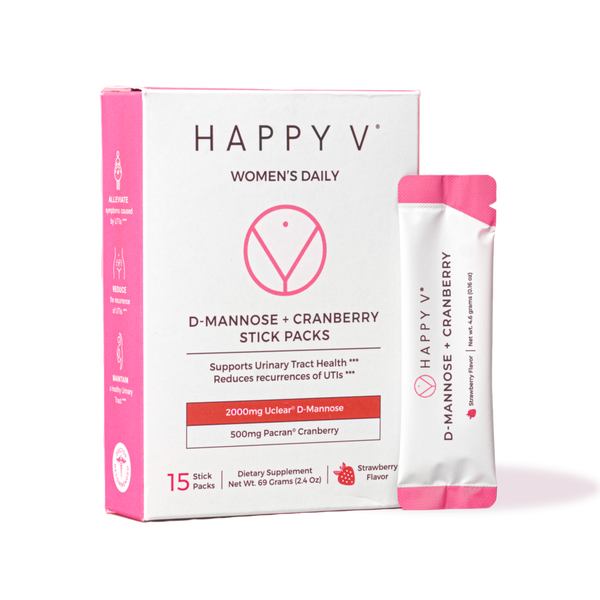- Fact Checked
- August 15, 2025
- 5 min read
Trichomonas Vaginalis: What to Know About This Under-the-Radar STI Parasite
Table of Contents
Table of Contents
You’ve probably heard of sexually transmitted infections (STIs) like chlamydia and gonorrhea, but what about trich? Short for trichomoniasis, this common STI is caused by a parasite called Trichomonas vaginalis1…and it’s way more widespread than most people think.
Because its symptoms often overlap with other vaginal infections like bacterial vaginosis or a yeast infection, trichomoniasis can easily go misdiagnosed, which is dangerous, since, left untreated, it can increase your risk of complications like pelvic inflammatory disease, low birth weight, and even other STIs.
Let’s get to know the parasite behind the infection, how trichomoniasis affects your body, and how to bounce back after an infection.
This post is for informational purposes only and does not constitute medical advice. See full disclaimer below.
What Is Trichomonas vaginalis?
Trichomonas vaginalis (or T. vaginalis) is a protozoan parasite that causes trichomoniasis, a sexually transmitted disease primarily spread through sexual intercourse2. Unlike bacteria or viruses, this tiny organism moves with a whip-like tail, allowing it to migrate through the vaginal canal, urethra, or cervix (depending on who’s infected).
This parasite thrives in the urogenital tract and can live in both men and women, although it’s diagnosed far more often in women. The tricky part? Many infected people never show symptoms, which means T. vaginalis can silently spread from one sexual partner to another.
What Is Trichomoniasis?
Trichomoniasis is the infection caused by Trichomonas vaginalis, and it’s one of the most common—but often underdiagnosed—sexually transmitted infections in the U.S. According to the Centers for Disease Control and Prevention (CDC), millions of Americans contract trich each year, yet the prevalence is likely underestimated due to how many people remain asymptomatic.
When symptoms of trichomoniasis do show up, they often resemble other infections like bacterial vaginosis, vaginitis, or candidiasis3. Common signs include:
- Vaginal discharge that’s thin, yellow-green, or frothy with a strong odor
- Itching or soreness around the vulva4
- Burning during urination or after sex5
- Redness of the cervix, sometimes referred to as “strawberry cervix”
- In men: discharge from the urethra, urethritis, or painful urination
Diagnosis: How Do You Know It’s Trich?
Diagnosing trichomoniasis requires more than a hunch. Your provider will likely perform a pelvic exam and collect a vaginal swab6. They will then look for the parasite using:
- Wet mount microscopy (observing the motility of live trichomonads)7
- Antigen tests
- Nucleic acid amplification tests (NAATs) – the most sensitive and recommended by the CDC
These tools help differentiate T. vaginalis from other STIs and non-STIs like BV or yeast infections that affect the genital tract. Testing is especially important for sexually active people and those with multiple sexual partners.
Treatment for Trichomoniasis
While no one ever wishes for an STI, the good news is that trich is very treatable8. Most people are prescribed the antibiotic metronidazole or tinidazole, usually as a single dose or a brief course9. These antibiotics are part of the CDC’s treatment guidelines for sexually transmitted diseases.
During treatment your doctor may advise you to:
- Avoid alcohol for 24 hours after taking the meds
- Inform and treat all sex partners to avoid reinfection
- Practice safe sex (using condoms) until cleared
Complications from Untreated Trichomoniasis
Regular STI testing is crucial, especially for trich. Leaving even asymptomatic trich untreated can increase your risk of:
- Pelvic inflammatory disease (PID)
- Preterm delivery and low birth weight in pregnancy
- Greater susceptibility to HIV and other STIs
Persistent inflammation of the vagina and genital tract also compromises long-term reproductive health10.
Supporting Vaginal Health After Treatment
Once you’ve cleared the infection with antibiotics, it’s time to give your body a little extra love. The antibiotics that treat trich can also wipe out good lactobacilli, the probiotics that keep your vaginal flora in balance11.
Happy V’s Prebiotic + Probiotic contains clinically studied strains like of Lactobacillus like L.acidophilus and L. rhamnosus, which have been shown to help restore balance, maintain vaginal pH, and defend against overgrowth of pathogens.
Bonus: Preclinical research on Happy V's proprietary probiotic blend showed a reduction in harmful bacteria, including Candida albicans and Gardnerella, both of which are commonly associated with recurring vaginal infections post-STI treatment.
Other tips for recovery:
- Avoid douching, which can worsen the imbalance
- Stick with breathable cotton underwear
- Keep communication open with your sex partners and stay on top of screenings
When to See a Healthcare Provider
If you’re dealing with unusual vaginal discharge, itching, or burning, or you simply suspect you may have been exposed to T. vaginalis, schedule a visit. A quick swab and test can save you discomfort and prevent further complications.
And if you’ve already had trich, keep an eye out for any return of symptoms and ask your provider about ongoing prevention.
Final Thoughts
Trichomonas vaginalis may be small, but its impact on women’s health is big. This STI often goes undetected, but it can lead to serious reproductive issues if left untreated.
The bottom line? Don’t guess, test. And after treatment, give your microbiome the TLC it needs with probiotics and protective habits.
Keep the Conversation Going
- Visit our blog for more STI education and vaginal wellness tips.
- Join the Happy V Facebook community for shared experiences and support.
-
Explore our supplements made to support your vaginal health, from cycle to season.
Disclaimer: This blog is for informational and educational purposes only and is not intended to diagnose, treat, cure, or prevent any disease. Statements about supplements have not been evaluated by the Food and Drug Administration. For more information about trichomoniasis or other STIs, visit cdc.gov or speak to a licensed health care provider.








